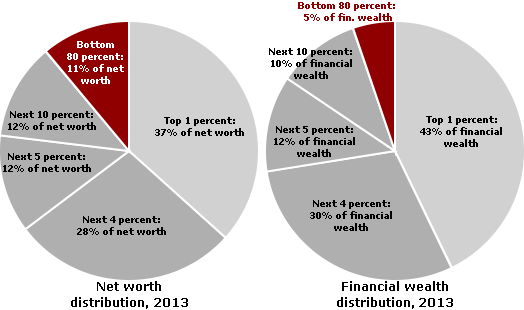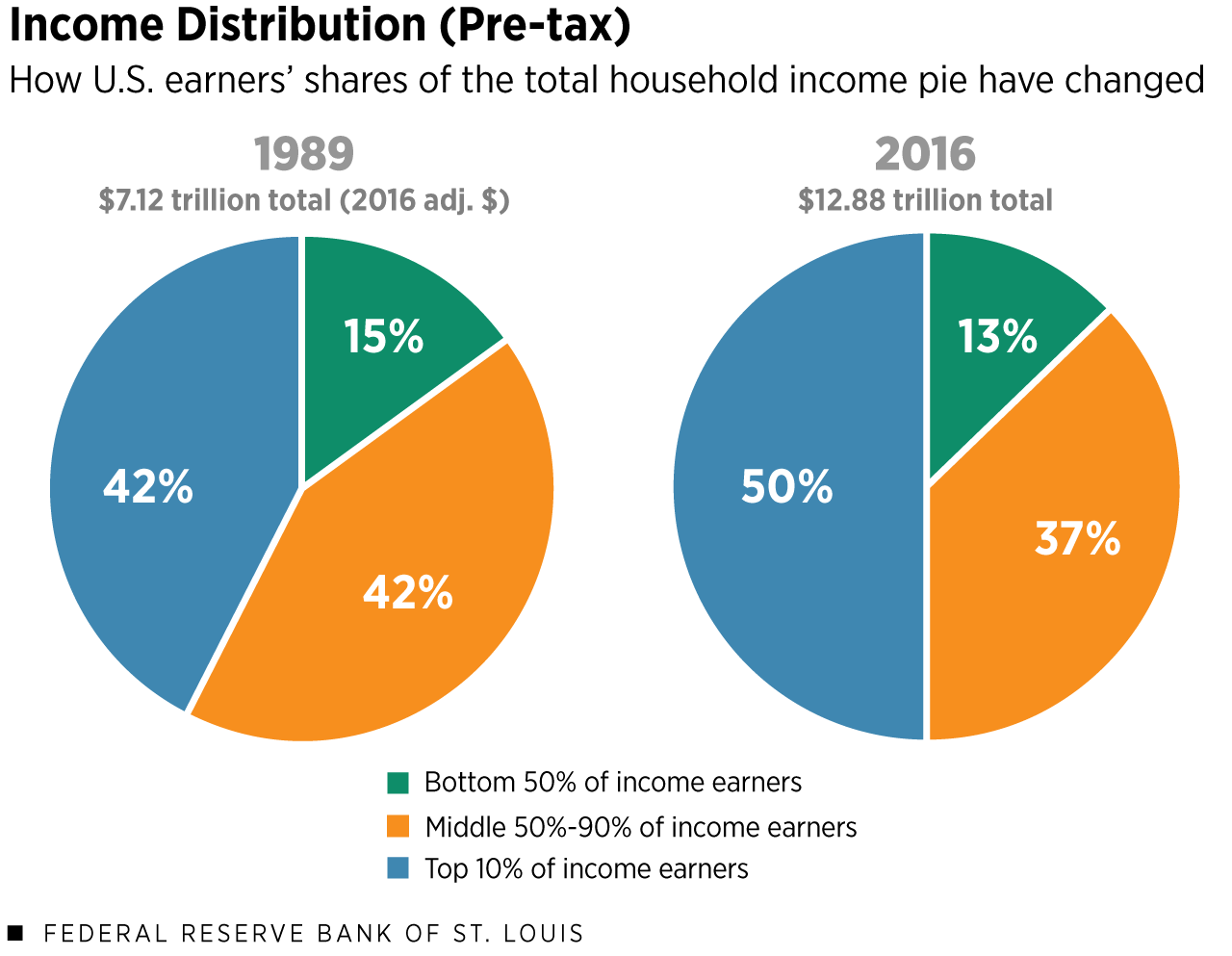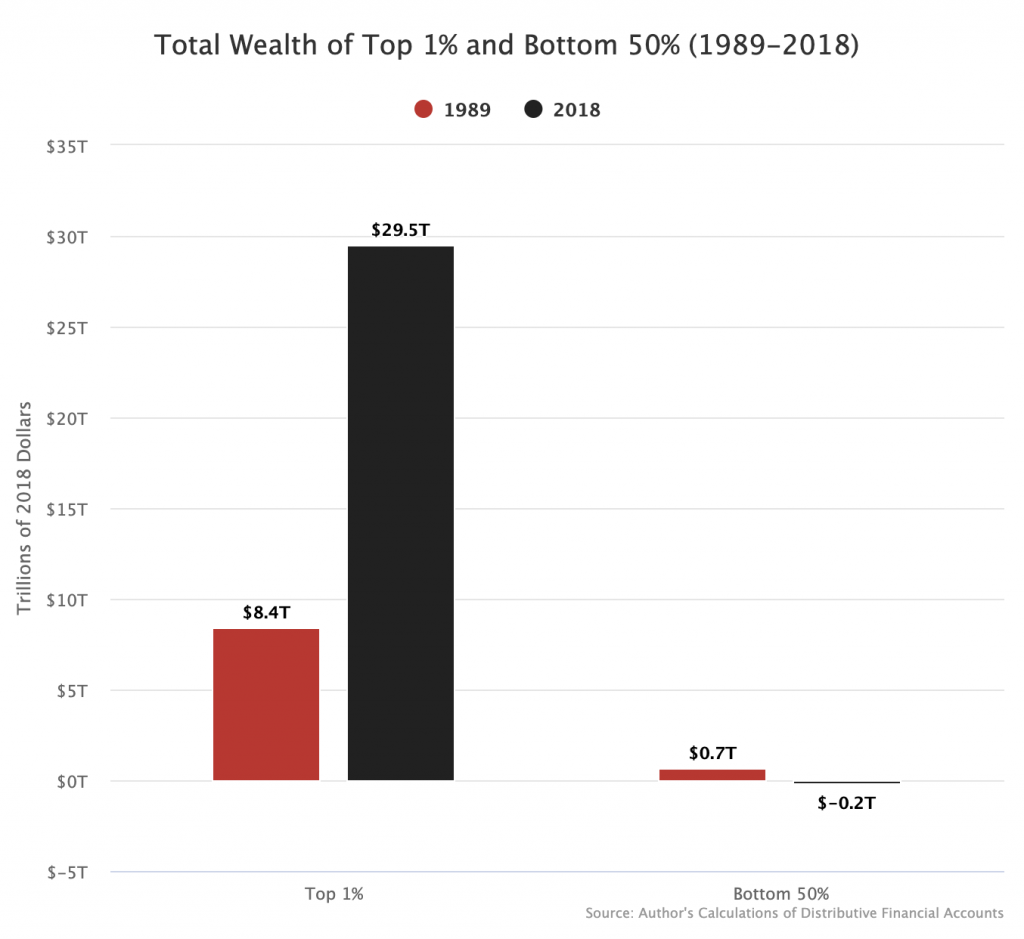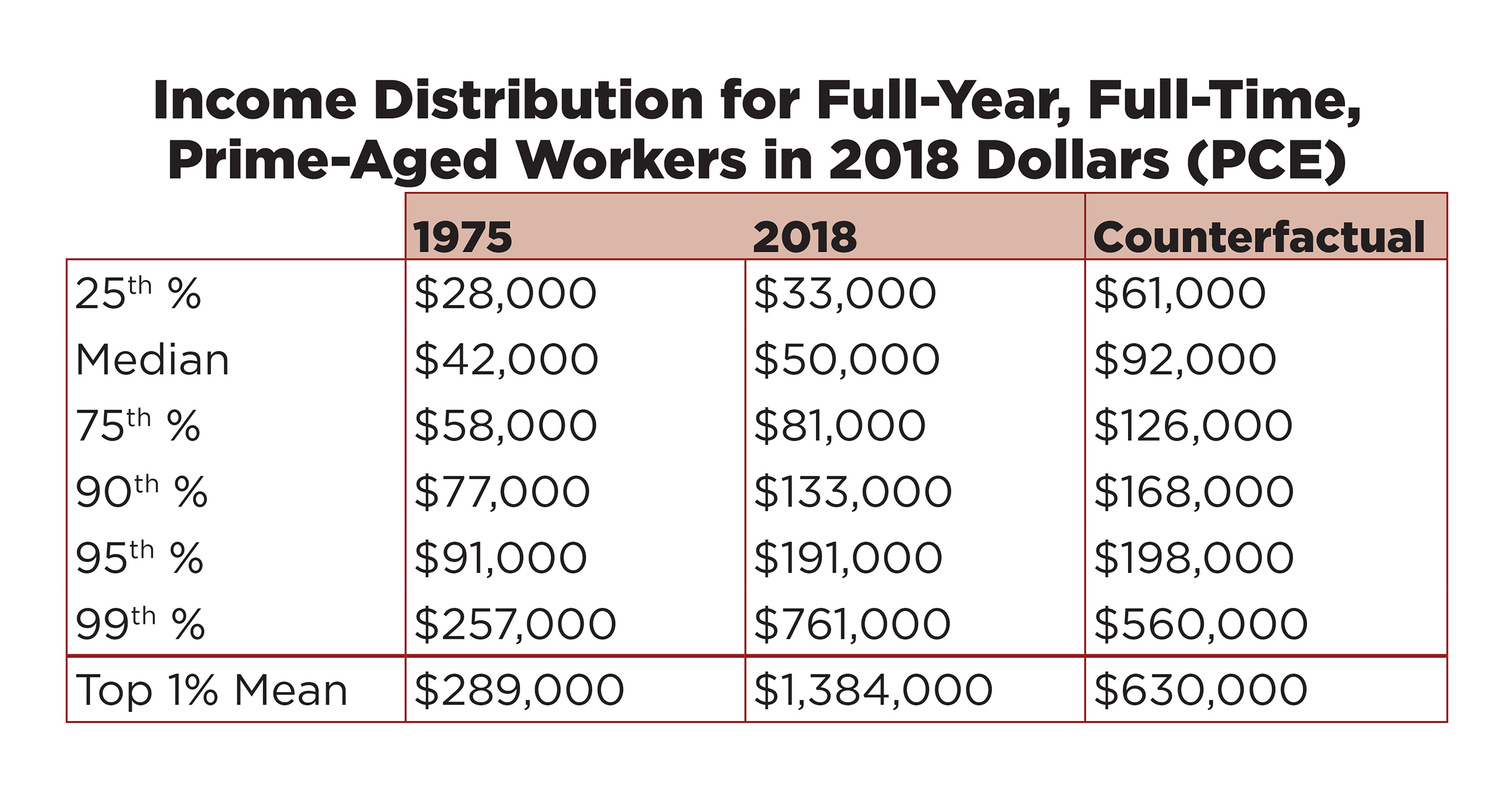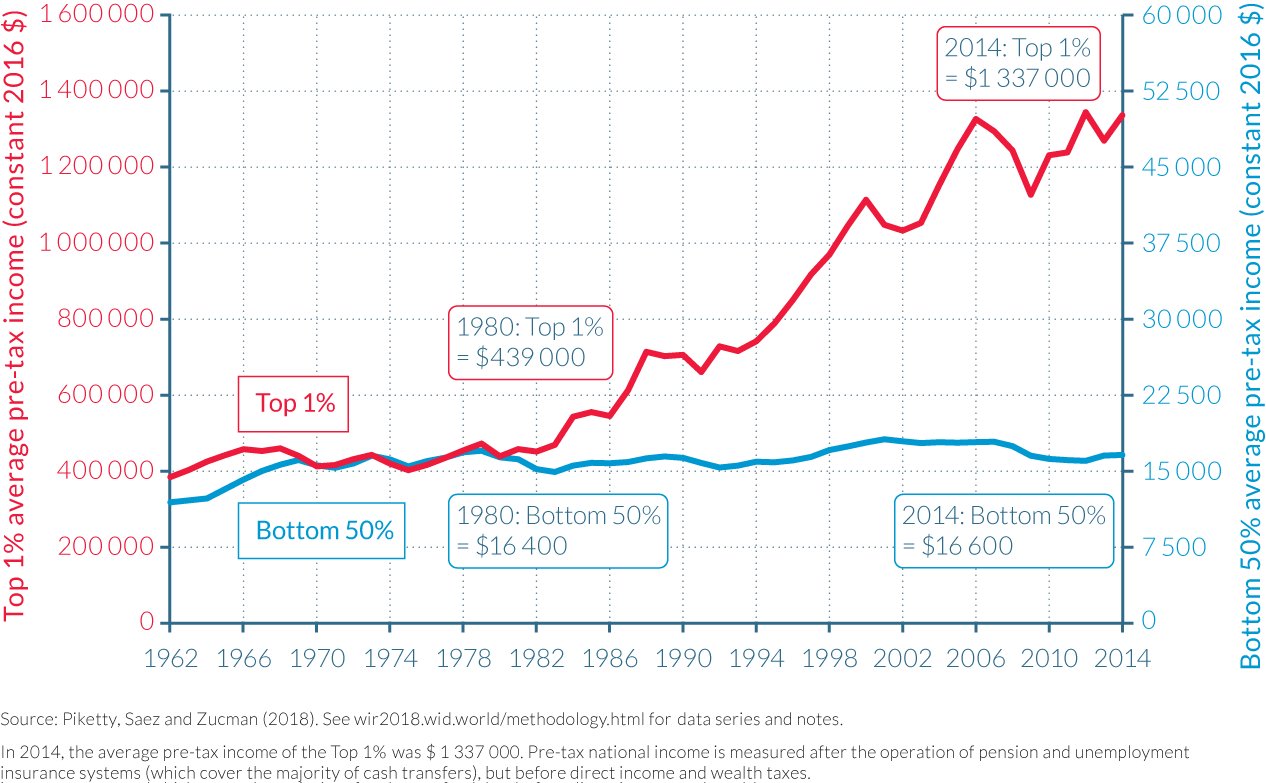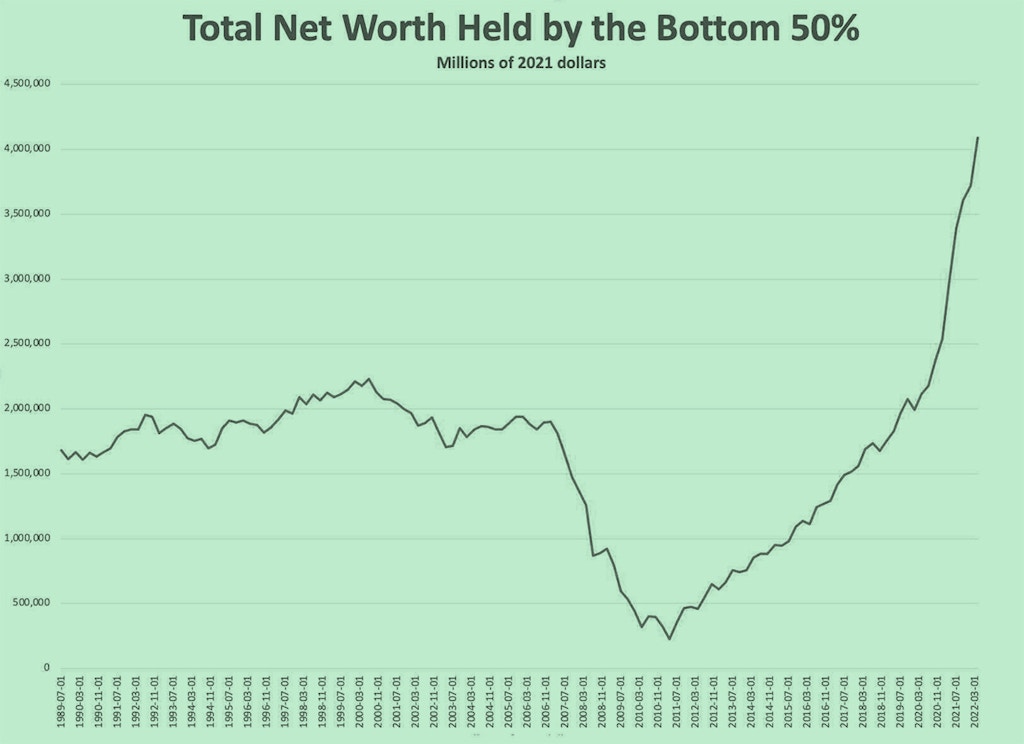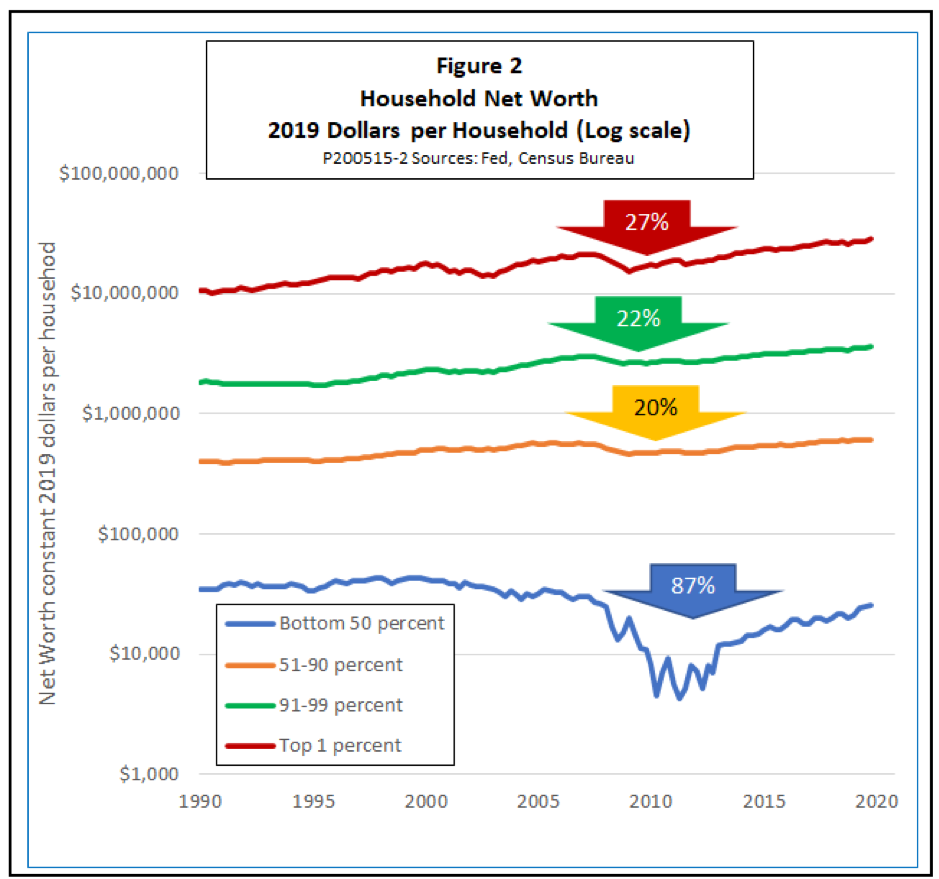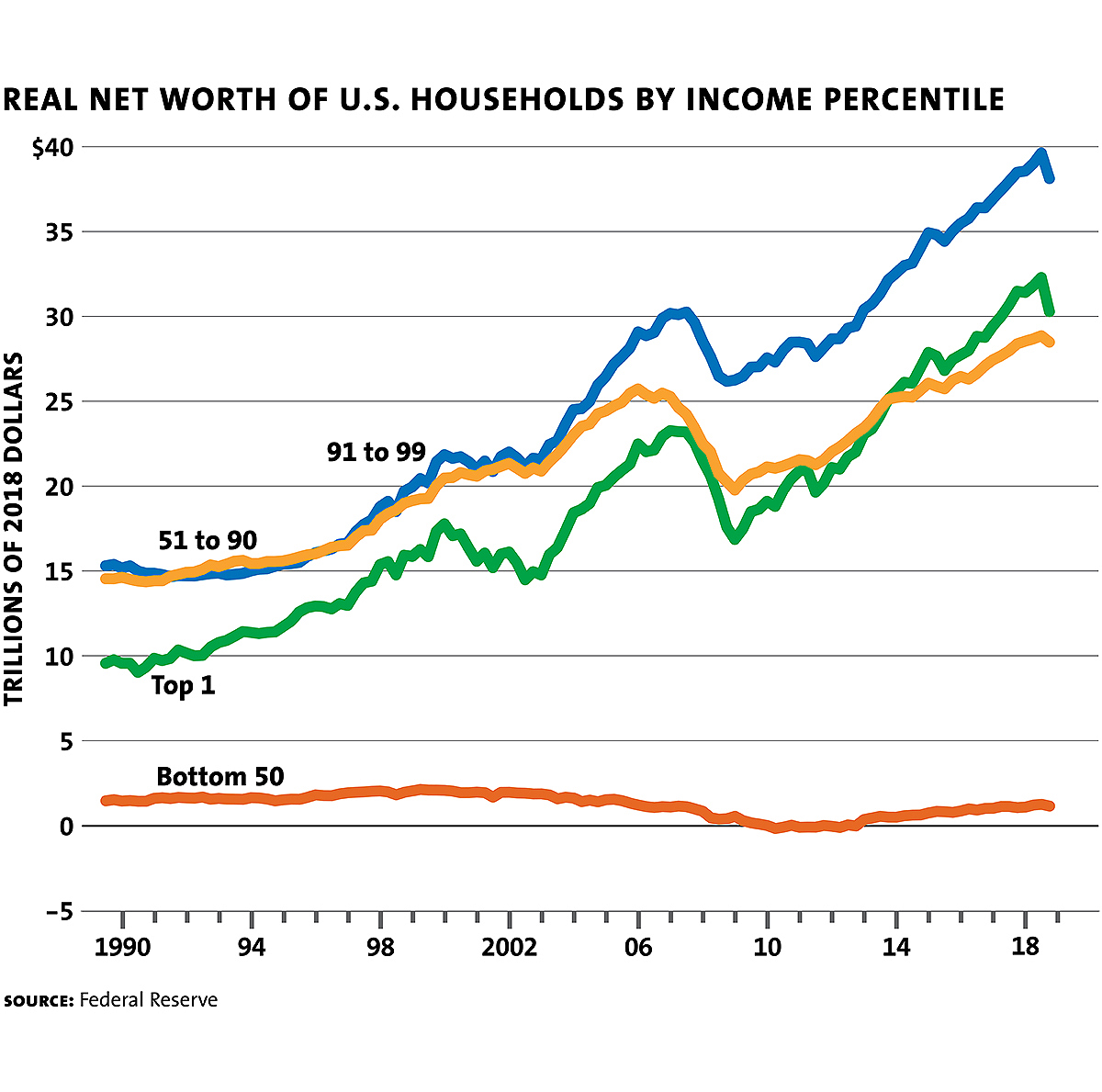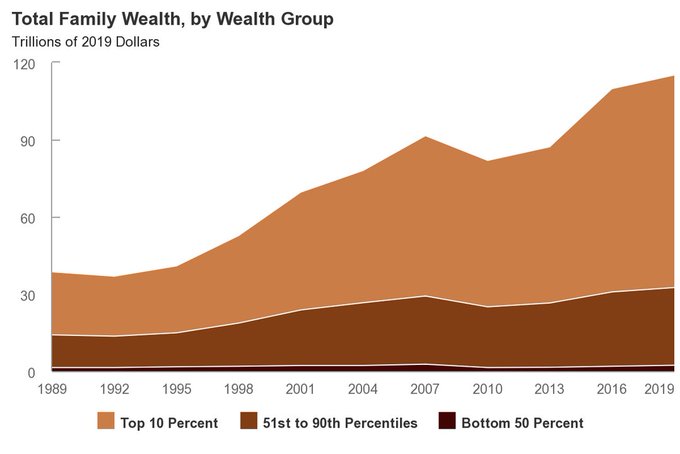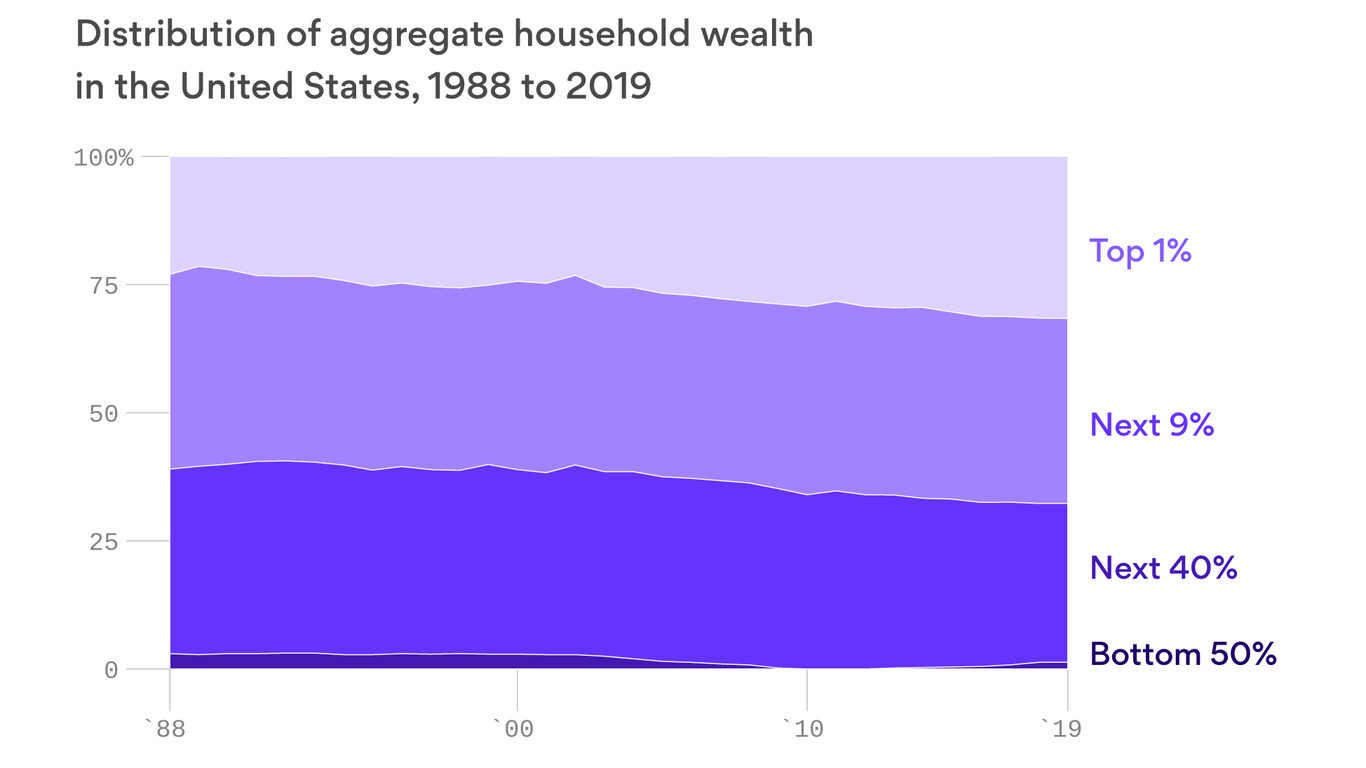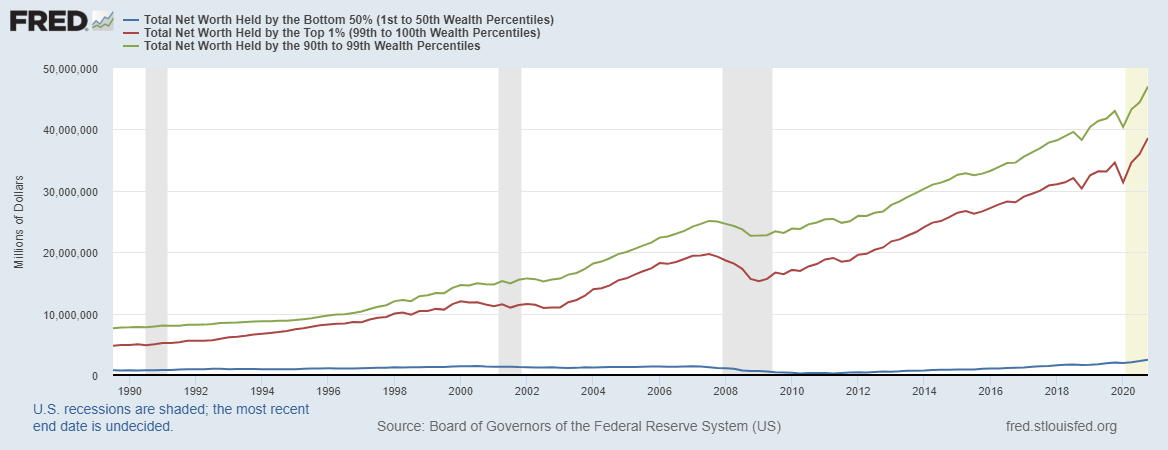
Income share for the bottom 50% of Americans is 'collapsing,' new Piketty research finds - MarketWatch
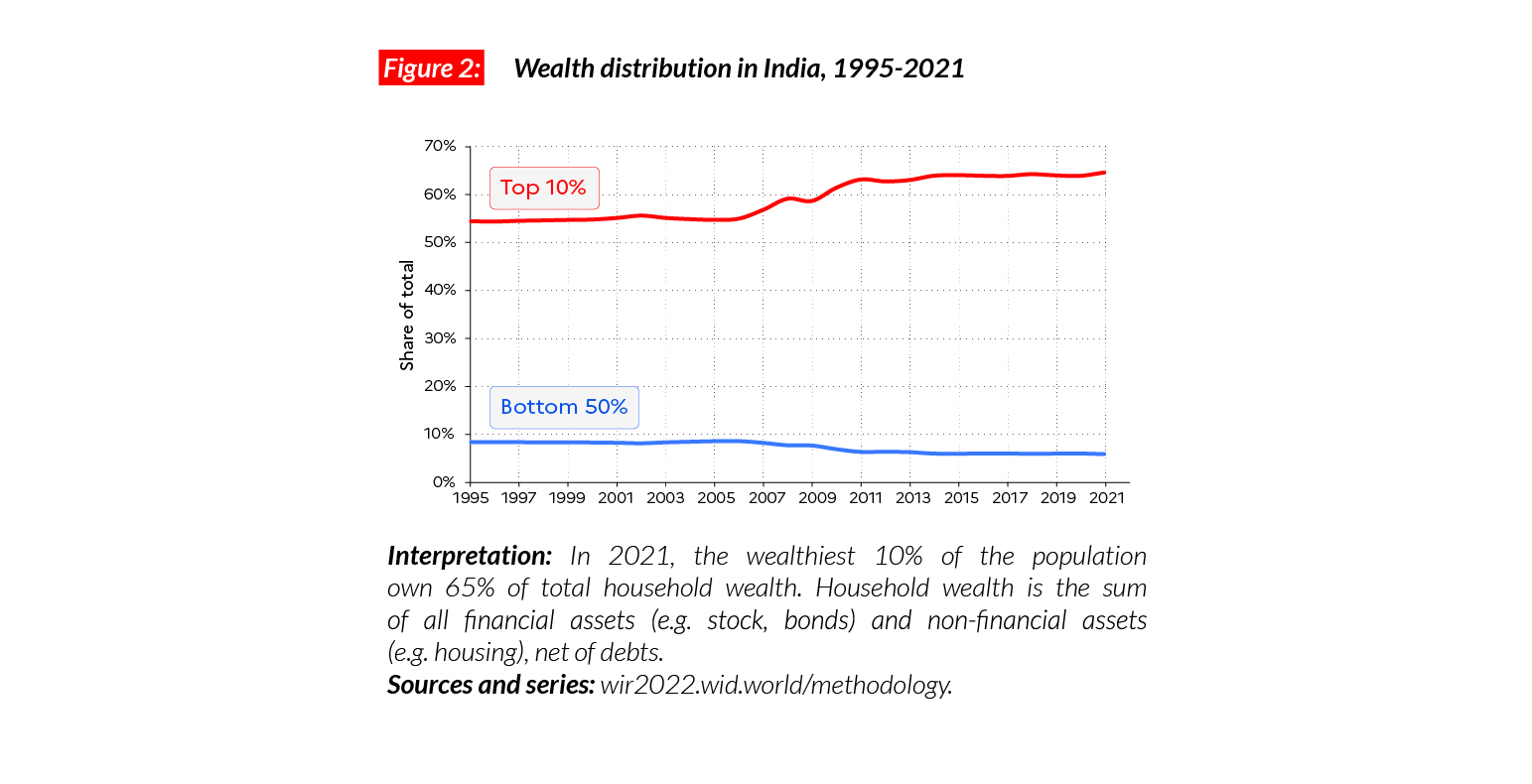
The World #InequalityReport 2022 presents the most up-to-date & complete data on inequality worldwide:
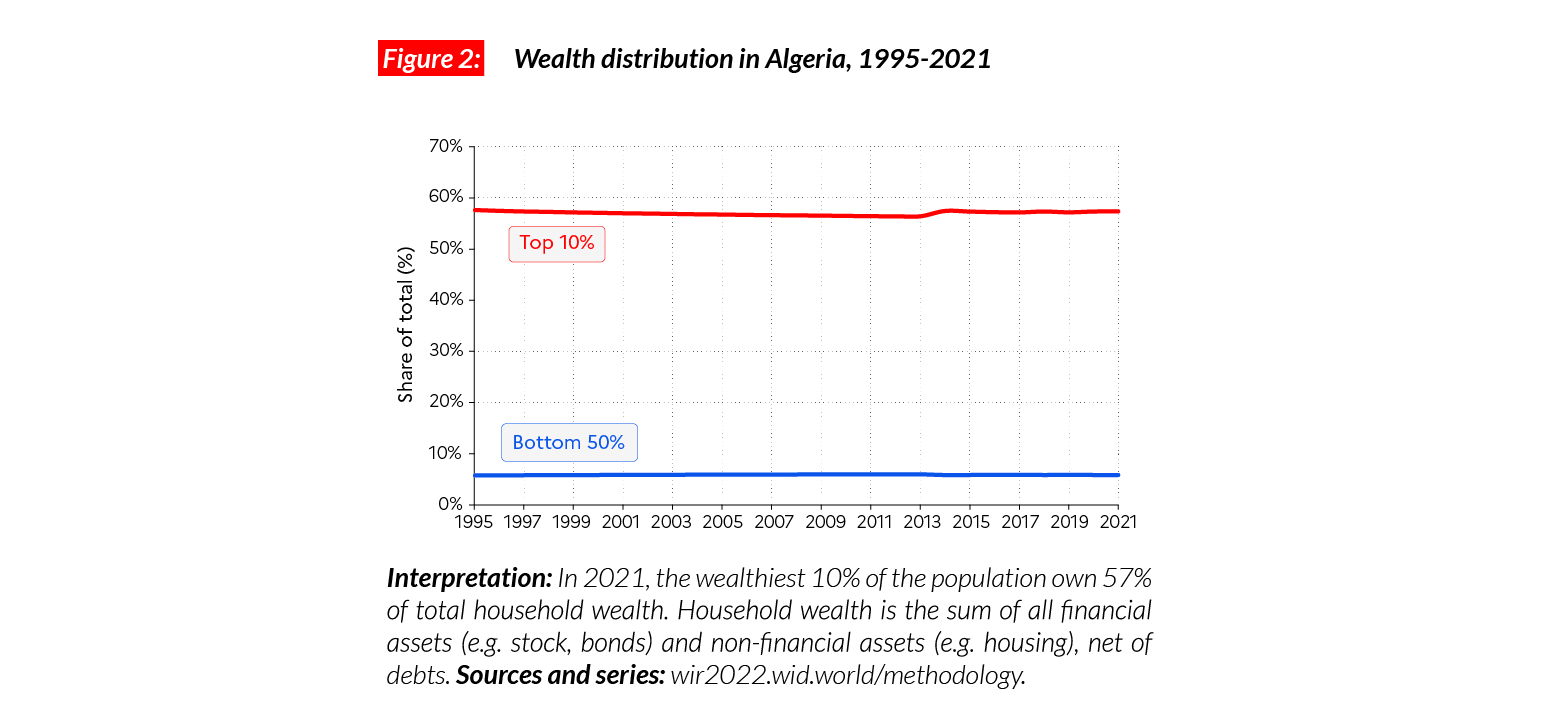
The World #InequalityReport 2022 presents the most up-to-date & complete data on inequality worldwide:

Net Wealth Distribution: The Bottom 50% Have 1% of the Wealth - Mish Talk - Global Economic Trend Analysis

The Top 1% Own 32.1% of Total Wealth, Bottom 50% Own 2.5% - Mish Talk - Global Economic Trend Analysis
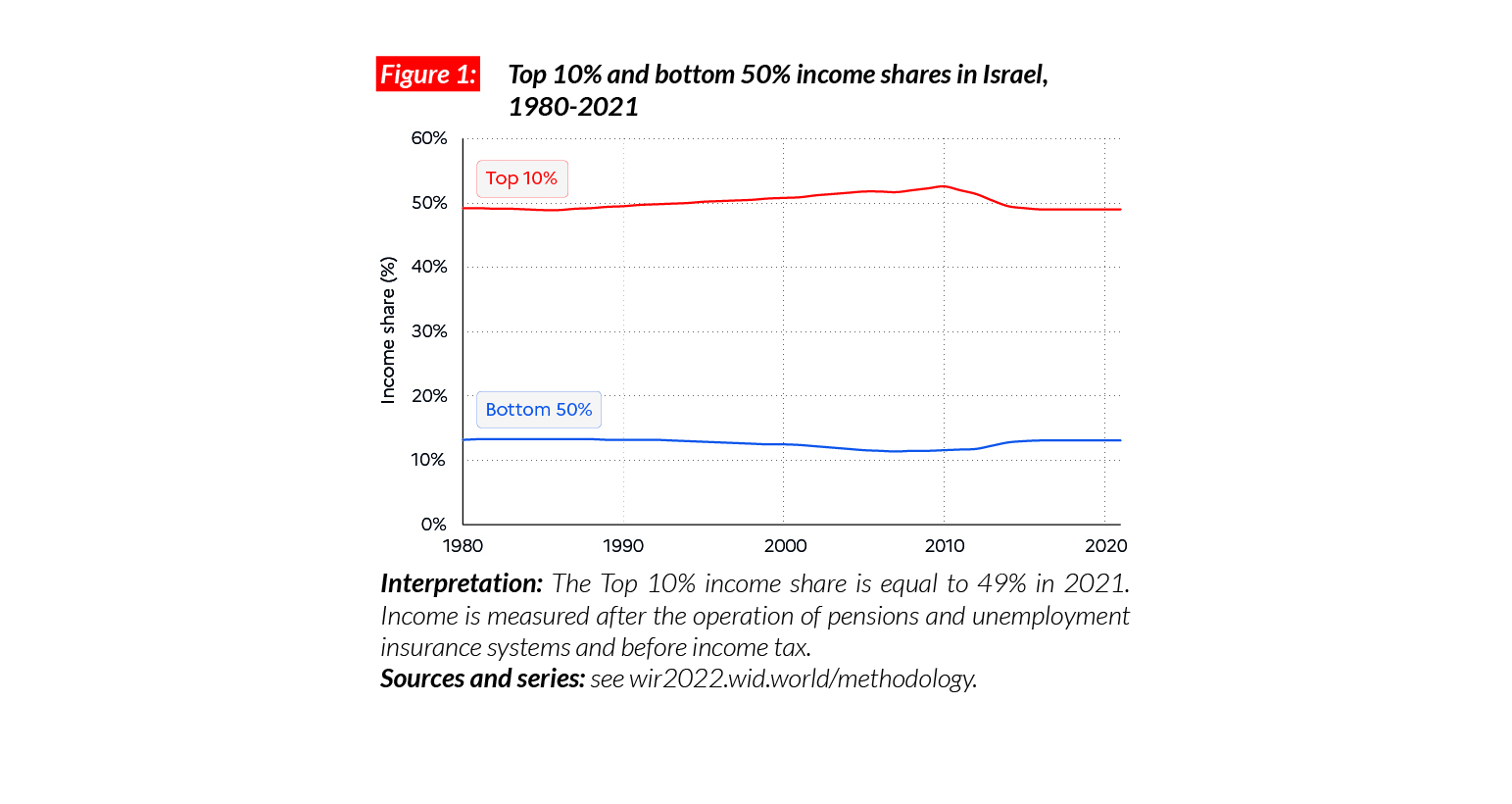
The World #InequalityReport 2022 presents the most up-to-date & complete data on inequality worldwide:

Top 1% of adults own 51% of the world's wealth; top 10% own 89%; and bottom 50% own only 1%. – Michael Roberts Blog

Three decades ago, the bottom 90 percent of America held 40 percent of total net worth. Today, it holds 30. - The Washington Post

